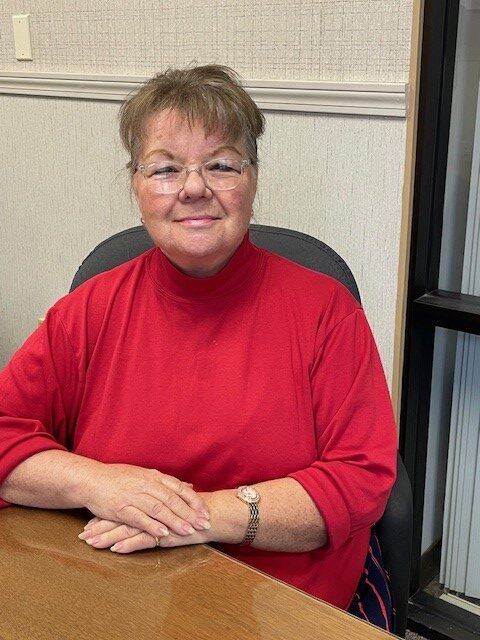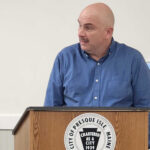Note: This is another in a series of historical look-backs at Cary Memorial Hospital as Cary Medical Center celebrates its 100th anniversary. This article tells the story of the development of the intensive care unit at Cary Memorial Hospital.
CARIBOU, Maine — Today’s modern intensive care units with advanced bed-side technology is a far cry from what was available to doctors and nurses at Cary Memorial Hospital as late as the mid-1960s. Linda Willard, a registered nurse, at the time, who worked at Cary Memorial Hospital from the fall of 1967 until 1977, reflected on the establishment of the first intensive care unit at Cary Memorial Hospital.
Willard attended the Hahnemann Hospital School of Nursing in Worcester, Massachusetts completing a 3-year training program. Coming to Cary in 1967 she began her work on the medical floor of the hospital. She explained that before the establishment of the ICU doctors relied on their stethoscope and their training to deal with critical patients.
“It was not until the hospital received a donation from Central Maine Power to purchase a monitor defibrillator that we were able to monitor and convert deadly arrhythmias for a patient from the same piece of equipment,” she said. “At that time, nurses had not been trained to defibrillate a patient, only physicians.”

The nurse recalled a young man who suffered a heart attack and did not survive because nurses were not authorized or trained to use the defibrillator. “I was so upset that I went to the director of nursing and told her about the incident and by the time I got back to my station Dr. Doug Collins had already enrolled me in a seminar to learn about Cardiac Arrhythmias.”
The 6-week series would take her to Portland where she learned a great deal about how to read a cardiac monitor and how to use the defibrillator. When she and the doctor returned to Cary she began to teach other nurses on how to use monitors to identify cardiac arrhythmias. The training and new equipment encouraged the hospital to open a small two-bed intensive care in a semi-private room.
“We had to identify funding to open up the unit and purchase the supplies we would need to expand,” said Willard. “It took about 18 months before we expanded to a four-bed unit which satisfied our needs until the move to the new hospital.”
The ICU is a generic unit that saw not only cardiac patients but victims of trauma, or complicated surgery requiring special care Pedro Simon, M.D. a vascular surgeon at the hospital began doing complex vascular surgery and would admit his patients to the ICU for close monitoring if indicated.
Once the ICU was established Willard and friend, Mary Lou Brown, a physical therapist, traveled to Australia to work in that country’s healthcare system. They learned a great deal from the experience and she was able to share some unique knowledge and practice working in a 700-bed hospital.
“I could teach them a lot about infection control and the wearing of gloves when dealing with rashes and the like,” Willard said. A medical student nurse listened to her advice and during a tick breakout she and the student nurse were the only ones not to be infected. Willard also talked about how central lines needed to be cleaned every day and tubing changed to protect against infection
Conversely, the Australians taught her a lot about respiratory disease and treatment. She learned to disassemble and reassemble respirators and how the staff would walk the patient around the bed to build up their stamina while they were on a respirator.
The large hospital had three intensive care units. One for cardiac patients, one generic unit and one for patients recovering from surgery.
“I learned a tremendous amount from that staff and I think they learned some from me and the way we cared for patients back home,” Willard said “It was a great experience for me and helped me throughout my nursing career.”
Returning to Cary she took on a role as an educator and supervisor for nursing staff. She pointed out that sending nurses away for multiple weeks for training would be very expensive and impact staffing. With the help of both Dr. Leland White and Dr. Douglas Collins the hospital was able to put together a strong educational program.
“Both Dr. Collins and Dr. White were excellent teachers,” Willard said. Our nurses were anxious to learn about new procedures and how they could benefit the patients in their care.”
The development of the ICU led to the need for advanced x-ray and lab services along with expanded space for physical and occupational therapy.
“We just outgrew what we could do at Cary Memorial Hospital,” she said. “That was the driving force behind the development of the new Cary Medical Center on the Van Buren Road. This was a major advance for the City of Caribou and the entire region.”
Willard, who left Cary in 1977 prior to the opening of the new medical center, went on to become a family nurse practitioner. She worked in Rockland and Dover-Foxcroft and helped to develop occupational medicine services. Retired, she now lives in Bangor.







